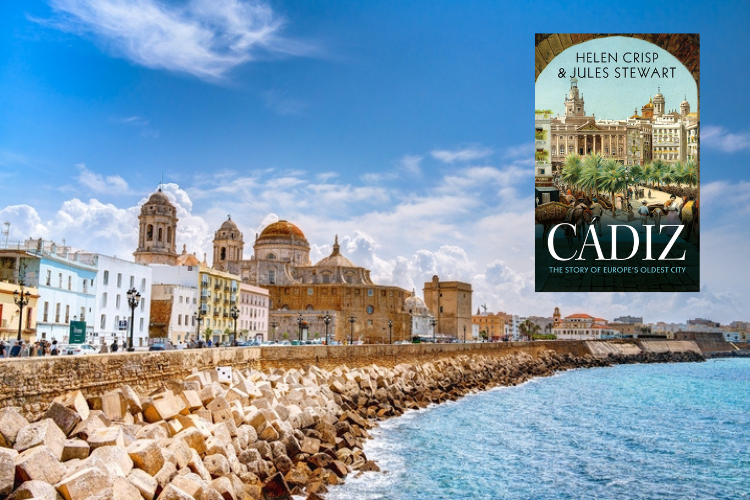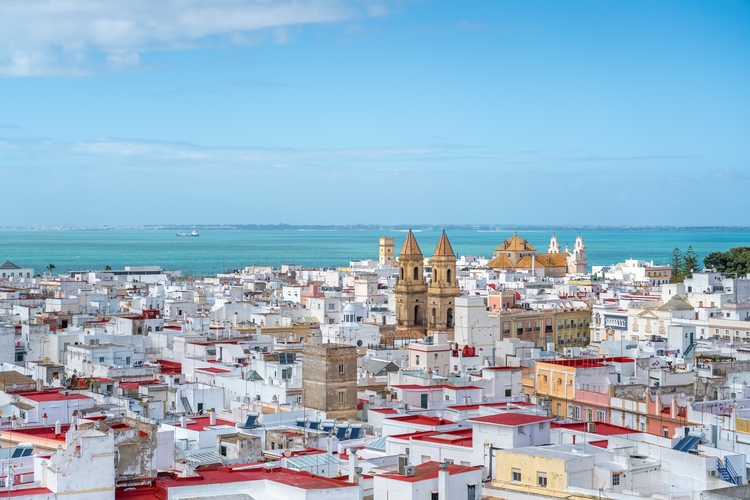
Find out more about the oldest continuously inhabited city in Western Europe and its pivotal significance across three millennia
By Shafik Meghji
In a prime location at the crossroads of two seas and two continents, the Spanish port of Cádiz is the oldest continuously inhabited city in western Europe.
Dating back more than 3,000 years, it’s a place ‘where documented history and legend intertwine’, write authors Helen Crisp and Jules Stewart. Their engaging and informative new book brings this remarkable city vividly to life, concisely tracing its ever-shifting fortunes across more than three millennia.
Enjoying this article? Check out our related reads…
Despite claims that it was the site of far-flung Tarshish – the biblical city where Jonah was disgorged by a whale – Cádiz began life as Gadir, the westernmost seaport of the Phoenicians. These master navigators and traders were lured from the Levant by tales of silver and other valuable metals in the region.
Although the Phoenicians invented the writing system that became the root of western alphabets, they left behind little documentation of their early settlement. Yet they laid the groundwork for a port that would, for better and worse, go on to play an outsized role on the world stage.
‘It can truly be said that few cities throughout their history have known so many days of glory and moments of destruction as Cádiz,’ note Crisp and Stewart, whose previous books include Madrid: Midnight City and Strike Up the Band: New York City in the Roaring Twenties.
As the authors explain, Cádiz’s strategic location and natural wealth later made it a target for the Romans, who occupied the city for more than 500 years. Known during this time as Gades, it flourished as a commercial metropolis, famed for its vast theatre, imposing aqueduct and troupes of dancing girls renowned for their ‘wanton gestures’.
Following the collapse of the Roman Empire, Cádiz faded into relative obscurity. It was passed between a series of Germanic tribes until the arrival of the Moors from North Africa in 711. Known for the next eight centuries as Qādis, it was, for a time, ‘unloved but not entirely ignored’ within the wider region of Al-Andalus. By the 12th century, however, it had risen once again in importance, offering a safe harbour for Moorish warships.

After the Reconquista and the dramatic rise of the Spanish Empire, Cádiz regained its status as a pivotal port. It became a central hub in the Spanish slave trade, while gold, cotton, tobacco and spices poured in from the Americas and Asia.
Its riches made it a target for imperial rivals – not least the English, who raided, sacked and nearly destroyed the city in 1596, an attack that led to the construction of major fortifications.
As the book carefully details, the centuries that followed were no less dramatic. Cádiz became known as the ‘birthplace of Spanish liberalism’ in the 19th century, only to fall swiftly to the Fascists during the Spanish Civil War.
The authors describe the brutal reprisals that followed: ‘Once the resistance was quashed, the reprisals were terrible.’ Even today, mass graves of executed supporters of the Republic are being unearthed in and around the city.
Today, Cádiz’s traditional industries, such as shipbuilding, face ‘an uncertain future’, though the growth in tourism has provided an economic lifeline. Crisp and Stewart’s entertaining and stylishly written book – complete with a listings section and guidebook-style recommendations – is likely to tempt readers to see the city for themselves.
‘Despite the uncertainties ahead,’ they conclude, ‘the prevailing air in a city that has withstood 3,000 years of invasion, bombardment and siege reflects a consensus that Cádiz will surmount the hurdles ahead.’




